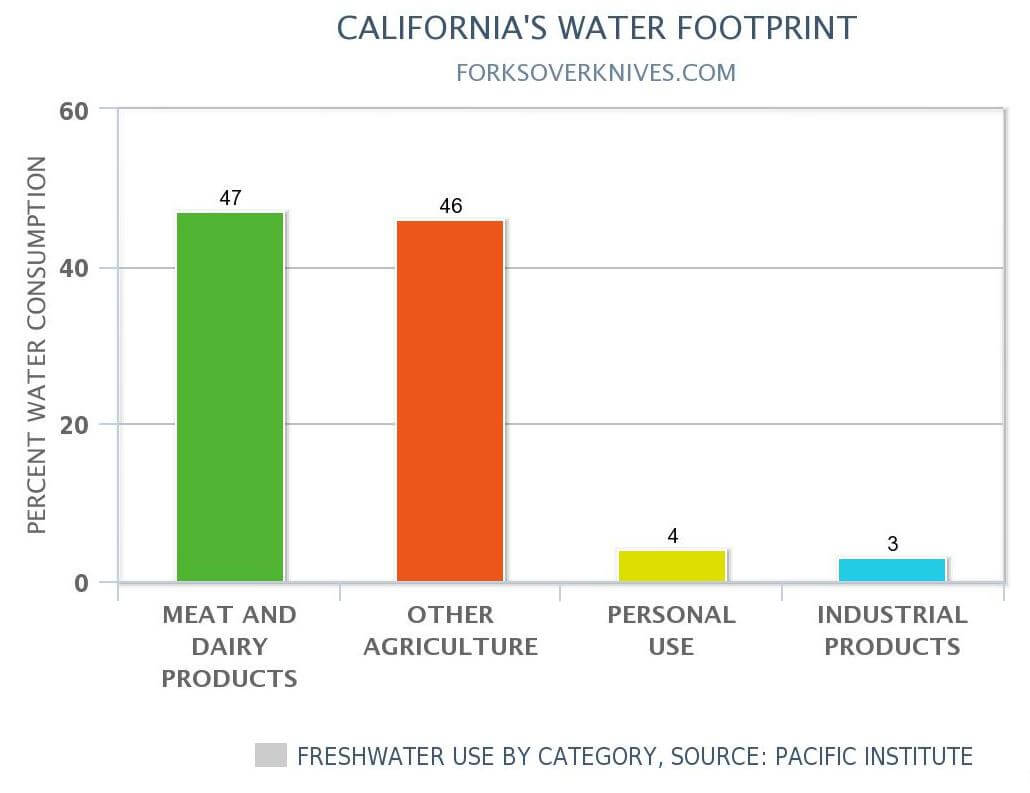How Our Dinner Menu Can Help Solve California’s Water Crisis
California has been in a severe drought for the last four years, which means local governments have started rationing water for showers and sprinklers, and farmers have started drilling into our groundwater supply.
Surveys show that 90 percent of Californians are concerned about conserving water, but they’re not given the big picture. Long showers and lawn sprinklers are not the reason we are in a water crisis.
It’s easy to follow the flow of water. If we stopped eating animals, there would be no water crisis here in California.
Animal Agriculture Uses Almost Half of Our Water
Growing feed crops for livestock takes up almost half of the water in California. Private homes use less than 5% of the water supply.
It takes, on average, 2,500 gallons of water to produce just one pound of beef in the U.S. The average American eats over 200 pounds of meat every year.
That means one hamburger takes about 650 gallons of water to create.
Alfalfa, the Thirsty Crop
Every year, drought-stricken California devotes 900,000 acres of its land to growing alfalfa to make hay, ninety-five percent of which is eaten by cattle (the other five percent by horses).
Each one of these 900,000 alfalfa acres receives irrigation to the tune of 1 to 2 million gallons per year (50-80 acre inches per acre per year).
Therefore, California uses 1.8 TRILLION gallons of freshwater to produce alfalfa hay for livestock each year.
If California stopped growing alfalfa as livestock feed for just one year, that would leave enough water to sustain the human population of the city of San Francisco for the next 66 years.

<snip>
http://www.forksoverknives.com/california-water-crisis-drought/
frazzled
(18,402 posts)Weed ... a huge consumer of water resources in California:
Mind you, that's just in the three watersheds the researchers looked at. According to the Press Democrat, there are more than 1 million pot plants in Mendocino alone—not counting legal ones licensed for the medical market.
Already, the region's salmon tributaries are under severe pressure—as many as 24 went dry last year, the Press Democrat reports. And even without the drought, there just isn't enough water available to keep the pot crop humming and the salmon moving along, state Fish and Wildlife Senior Environmental Scientist Scott Bauer told the paper.
http://www.motherjones.com/tom-philpott/2014/04/your-pot-habit-sucks-salmon
Think of that: 6 gallons a day times 150 days: that's 900 gallons for a single plant. Times millions.
See also:
http://www.latimes.com/opinion/op-ed/la-oe-0413-bauer-pot-20150413-story.html